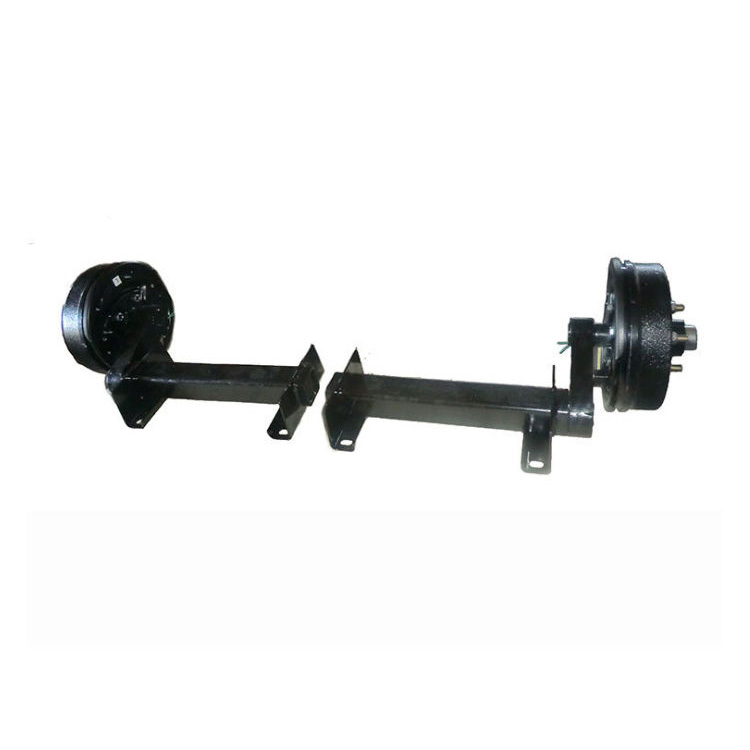 English
English Español
Español  Português
Português  русский
русский  Français
Français  日本語
日本語  Deutsch
Deutsch  tiếng Việt
tiếng Việt  Italiano
Italiano  Nederlands
Nederlands  Polski
Polski  한국어
한국어  Svenska
Svenska  magyar
magyar  Malay
Malay  বাংলা ভাষার
বাংলা ভাষার  Dansk
Dansk  Suomi
Suomi  हिन्दी
हिन्दी  Pilipino
Pilipino  Türkçe
Türkçe  Gaeilge
Gaeilge  العربية
العربية  Indonesia
Indonesia  Norsk
Norsk  تمل
تمل  český
český  ελληνικά
ελληνικά  український
український  Javanese
Javanese  فارسی
فارسی  தமிழ்
தமிழ்  తెలుగు
తెలుగు  नेपाली
नेपाली  Burmese
Burmese  български
български  ລາວ
ລາວ  Latine
Latine  Қазақша
Қазақша  Euskal
Euskal  Azərbaycan
Azərbaycan  Slovenský jazyk
Slovenský jazyk  Македонски
Македонски  Lietuvos
Lietuvos  Eesti Keel
Eesti Keel  Română
Română  Slovenski
Slovenski  मराठी
मराठी  Srpski језик
Srpski језик  ภาษาไทย
ภาษาไทย
What is the function of the braked torsion axles for trailers?
2025-07-15
As a key component connecting the braking device and the travel system, the braked torsion axles for trailers plays a dual role as a "power transmission center" and a "safety stabilizer" during the trailer's driving and braking process, directly affecting the vehicle's handling and safety.
Its core responsibility is to accurately transmit the braking torque. When the driver steps on the brake pedal, the torsion shaft converts the force output by the brake valve into torque (range 2000-6000N・m), and drives the brake shoe to fit the brake drum through a rigid connection to achieve wheel deceleration. The torque transmission error of a high-quality torsion shaft can be controlled within ±3%, ensuring that the braking force of the wheels on both sides of the double-axle trailer is consistent, avoiding deviation or tail swinging during braking, and shortening the emergency braking response time to less than 0.8 seconds.
Buffering impact to ensure driving smoothness. When the trailer is driving on uneven roads, the torsion shaft absorbs the longitudinal impact force through its own elastic deformation (maximum torsion angle ≤8°) to reduce the bump amplitude of the vehicle body. Data shows that trailers equipped with adjustable torsion shafts reduce the vibration damage rate of goods on gravel roads by 50%, while reducing the wear of brake system components and extending the service life of brake pads by more than 30%.
Load-bearing and structural stability. The difference between trailer axle loads can reach 3-5 times when empty and fully loaded. The torsion shaft needs to withstand alternating loads and shear forces. After overall quenching and tempering, the yield strength of its 40CrNiMoA alloy material is ≥900MPa, which can resist plastic deformation caused by long-term heavy loads, ensure that the straightness error of the axle tube is ≤0.5mm/m, and ensure uniform wear of the tires.
Adapt to the braking needs of multiple scenarios. The torsion shaft design is differentiated for different trailer types: heavy-duty semi-trailers use two-stage torsion shafts to improve torque bearing capacity; caravan trailers use lightweight torsion shafts (weight reduction of 15%), taking into account both braking performance and fuel economy. In addition, its sealing structure (IP67 protection level) can prevent mud and water from intruding, and can work stably in an environment of -30℃ to 100℃, adapting to various complex working conditions.
Although the braked torsion axles for trailers are hidden in the chassis system, it has three major functions of "force transmission, buffering, and load bearing", building the first line of defense for braking safety, and is the core guarantee of the reliability and safety of modern trailers.




